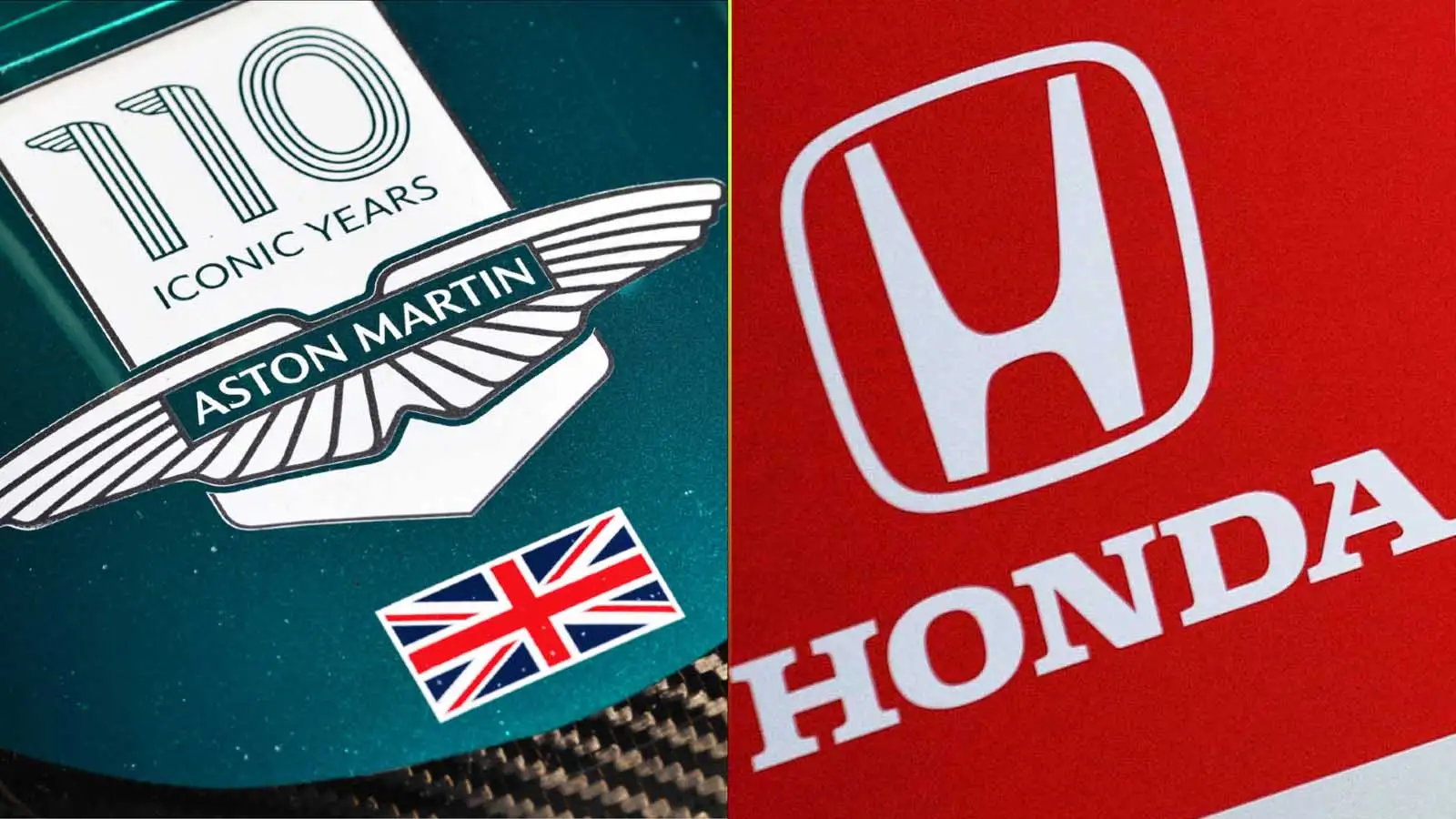Aston Martin boss provides Honda update as key Adrian Newey benefit felt

Aston Martin F1 team logo
Aston Martin is hard at work alongside Honda to ready the best combined package possible for F1 2026, when the new chassis and engine regulations will come into effect.
In Aston Martin, you find a team which has set its sights on ascending to Formula 1 world championship glory. It has aligned with Honda, a manufacturer which boasts plenty of F1 title success, and Adrian Newey, who has contributed to a total of 26 world championship wins. Helping Aston Martin is the fact that Newey and Honda are very familiar with the other, a key benefit unlocked.
Aston Martin and Honda: A future F1 powerhouse?
Aston Martin will call time on its Mercedes customer engine alliance to link-up with Honda from F1 2026. That season marks a new era for the sport, with smaller, lighter cars, utilising active aerodynamics, set to hit the grid.
Meanwhile, the electrical output from the power unit will triple, while the internal combustion engine will run on fully sustainable biofuel.
Cowell, in an interview with Motorsport.com, described the move to works team status with Honda as “liberating” for the Aston Martin engineers. He likened their current Mercedes customer deal to giving them a “black box that you can’t edit” in terms of the power unit which they work with.
Able to work directly with Honda to optimise the power unit and Aston Martin chassis as a complete package, Cowell confirmed that “there’s a healthy relationship there” between both parties.
“I think our team is engineering-led, and Honda are engineering-led as well,” he added. “So as soon as you get into the engineering things, we talk the same language.
“The culture is the same. It’s all about systems and what’s best for the stopwatch on Saturday in qualifying, and what’s the best way of covering 305 kilometres on Sunday. It’s a relationship that I’m really enjoying.”
And it is a relationship which benefits from the presence of Adrian Newey. The F1 design guru, who arrived at Aston Martin in March as managing technical partner and a team shareholder, is fully focused on the F1 2026 package. He has extensive, and recent, experience of working with Honda.
Title-winning experience too, with Newey having contributed to Red Bull’s combined six world championship wins with Honda power.
“It’s a big benefit,” said Cowell of Newey’s relationship with Honda. “Adrian knows, understands and respects them.
“That’s the thing and that just helps all the conversations. The relationship is already there, so the conversations are into the engineering details swiftly.”
How F1 2026 is shaping up
👉 F1 2026: Confirmed teams and power unit suppliers for F1’s huge regulation changes
👉 F1 2026 driver line-up: Who is already confirmed for the 2026 grid?
Aston Martin will be the sole team using Honda’s engine designed to the new F1 2026 regulations. At the Singapore Grand Prix, Cowell was asked whether he believes this puts the Japanese manufacturer at a disadvantage compared to rival OEMs, which will have several teams running their engines.
In addition to the Mercedes works team, McLaren, Williams and Alpine will also run that engine. The Ferrari engine will also be used by Haas and Cadillac. Meanwhile, the Red Bull Powertrains-Ford creation will be put through its paces by Red Bull and Racing Bulls.
Audi join Honda as the only other manufacturer which will see exclusive one-team use of its PU.
“I think there’s always a balance,” Cowell replied. “If you’ve got more teams, you get more track mileage. But if you have fewer teams, you can leave the point that you go from development into production later, so you have more time in the development phase.
“I think it’s going to be more down to the attention to detail rather than that.
“The test at Barcelona, three days of running. Are we all going to be doing 800 kilometres each day like we did in Bahrain 10 months ago? No. We’re going to be pulling everything together and making sure that everything works. The car will go around the track and come back under its own power.
“It’s going to be that sort of thrill of the development phase, which is exactly what it was like in Jerez in 2014 when we first all rolled out. And cars did roll out at 09:00 in 2014 and did many laps.
“That’s the remarkable thing about this industry. There are some great engineers, a great supply chain, operationally awesome teams, and everybody’s pushing hard to do the best in their field.”
Read next: Why F1 should rethink closed-door policy for 2026 secret shakedown test





